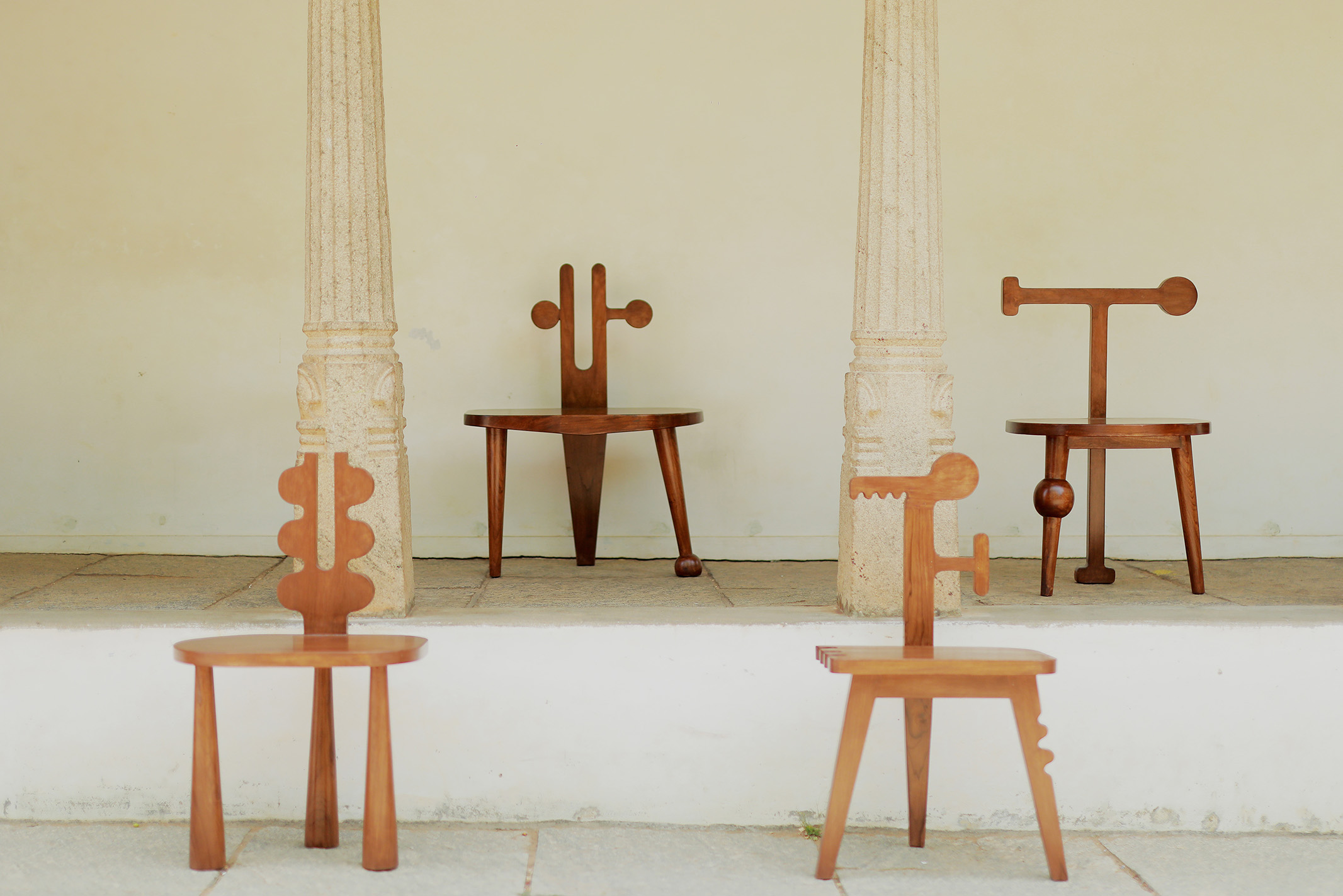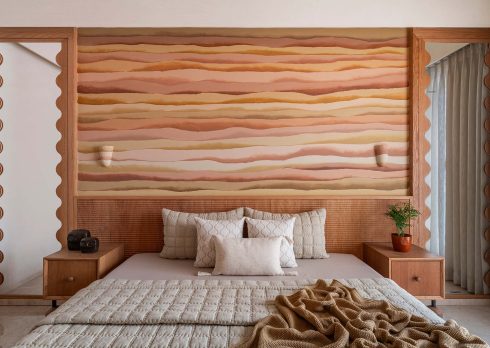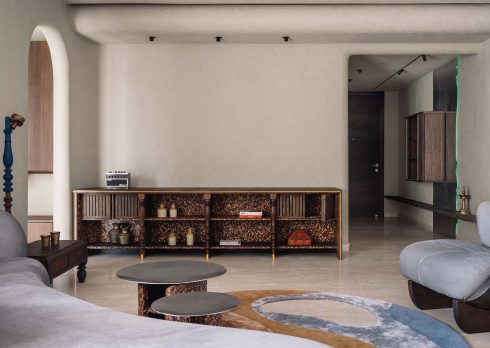The New Wave Of Indian Craftsmanship: Exploring India’s Furniture Legacy Across Its Four Corners
In celebration of World Craft Day, we journey through the four corners of India, spotlighting contemporary studios that revive traditional techniques for the modern home.
India boasts a kaleidoscope of handicrafts that reflect the unique artistry of its four corners. From the luminous Thathera metallics in the north to the decadent cladding techniques of Rajasthan, each region offers a glimpse into its creative soul. Venturing east, the transformative power of bamboo finds expression in futuristic design, while an ethereal medley of cane and rattan celebrates sustainable materiality. In the south, the mastery of reclaimed teak echoes the architecture of Chettinad homes. This World Craft Day, we’ve delved into an odyssey of remarkable traditions to unearth the rich vein of heritage that pulses through contemporary furniture studios.
North — The Heart of Mughal Lavishness
1. Harmonising Opulence And Functionality With Anantaya
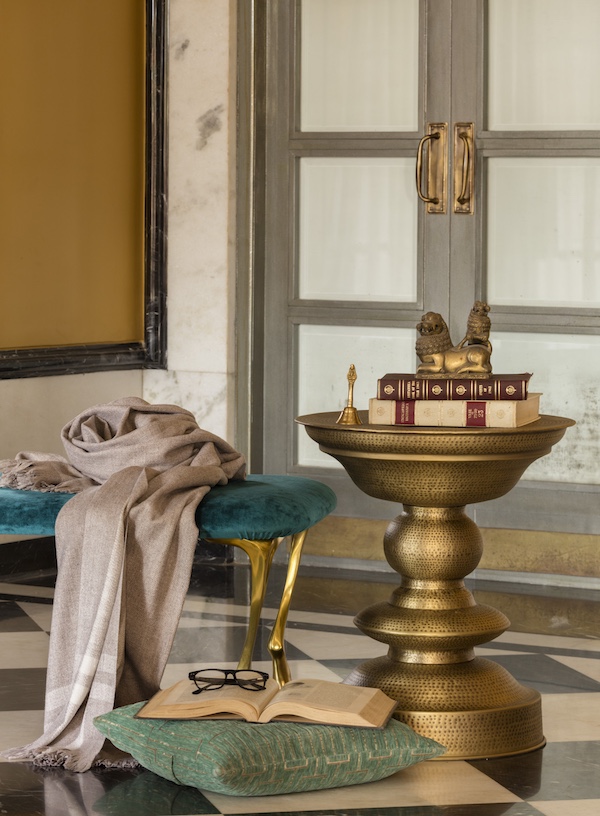
The Kalash Side Table. Price — ₹59,900 (Image Credits: Anantaya)
Found across various states of North India, including Punjab, Rajasthan, and Uttar Pradesh, the art form of Thathera metallurgy gained significant momentum during the reign of Maharaja Ranjit Singh, who recognized the importance of arts and crafts in his empire. The ‘Kalash Side Table,’ a stunning head turner from Anantaya, celebrates the architectural grace of temple and mosque spires through the skilled craftsmanship of its embedded artisans. This versatile piece, crafted from hand-hammered brass brings luxurious artistry creating heirloom pieces for your home.
2. Reviving The Radiant Appeal Of Brass With Viya
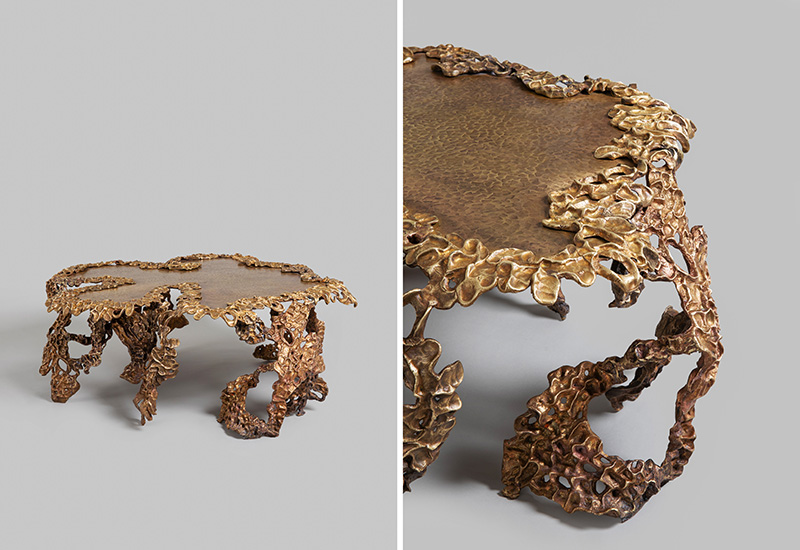
Brass and bronze craftsmanship in North India encompasses several techniques, including lost-wax casting for intricate sculptures, hand engraving for detailed designs, and inlaying materials like enamel or stones to enhance visual richness, all reflecting the region’s rich artistic consciousness. Named after the coveted spice known as red gold, the ‘Saffron Coffee Table’ from Viya felicitates local artisans who continue to uphold this age-old handiwork. Its design incorporates the warm, inviting hues of brass, elegantly capturing light and adding a touch of hedonism to your decor. As a versatile addition to your home, the ‘Saffron Coffee Table’ can be a stylish surface for collected artefacts, souvenirs, or even a unique stand for your favourite magazines.
West India: Rajasthan – The Land of Kings and Craftsmanship
3. Merging Metallics And The Austerity Of Concrete With Vakr
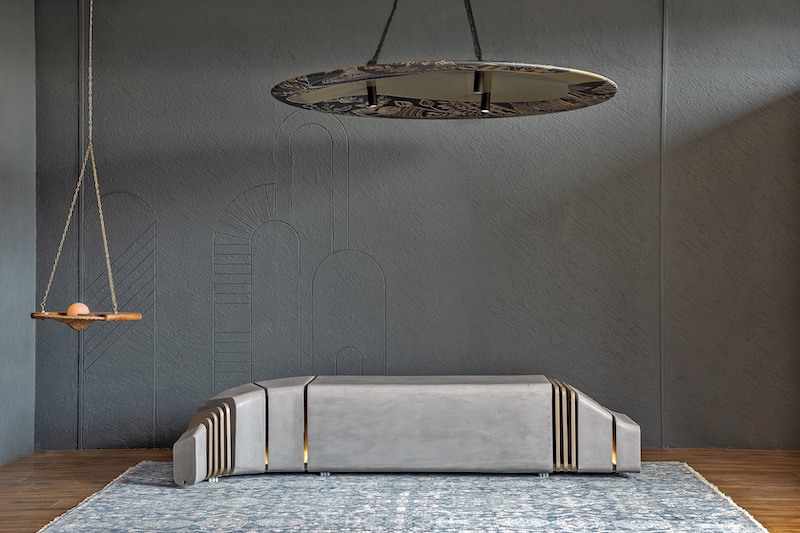
Micro-concrete, often seen as a modern innovation, finds its roots in traditional Indian craftsmanship. In the Western belt of India, a precursor to this technique can be found in the Arayish plastering style, which originated in the palaces and havelis of Rajasthan. At eight feet long, the Vakr Bench stands as a testament to this evolving tradition, its serpentine curves defying the rigidity of concrete, like a river frozen in time. Inspired by the structural playfulness of traditional jali carvings, where precise incisions create ethereal light patterns, the ‘Vakr Bench’ bridges the gap between traditional craftsmanship and contemporary design.
Also read: The Indian Craft Glossary – 25 Words You Must Know
4. Chasing India’s Classical Grandeur With Beyond Square
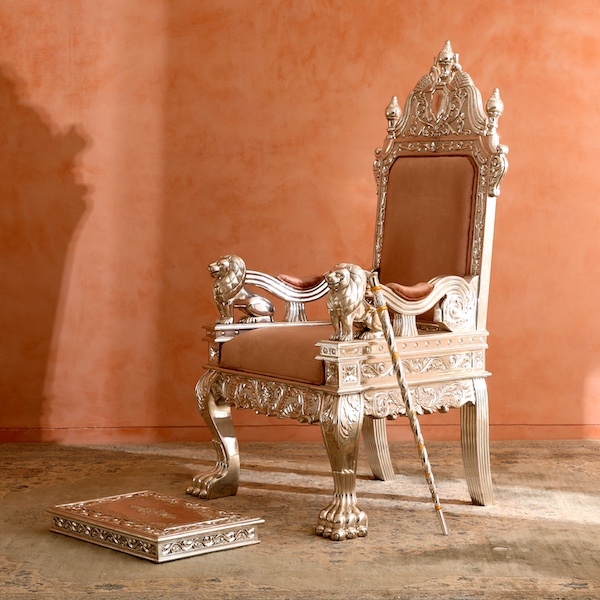
The art of chasing, as applied to furniture in India, has a history deeply intertwined with royalty and ceremonial grandeur. Originating in ancient times and flourishing during the Mughal reign (1526-1707), this technique involves wrapping carved wooden structures—typically crafted from teak, a hardwood prized for its resilience—with a lustrous second skin of precious metals. The ‘Maharaja Lion Chair,’ crafted by Beyond Square in Udaipur, is a modern ode to this regal tradition. The robust teak wood frame is meticulously clad in pure silver sheets, embellished with intricate lion motifs—symbols of strength, courage and royalty. The chair’s gleaming presence makes it a modern relic that brings the splendour of India’s regal past into contemporary interiors.
North East — A Bohemian Tapestry of Slow Living
5. Envisioning Bamboo As A Material Of The Future With Mianzi
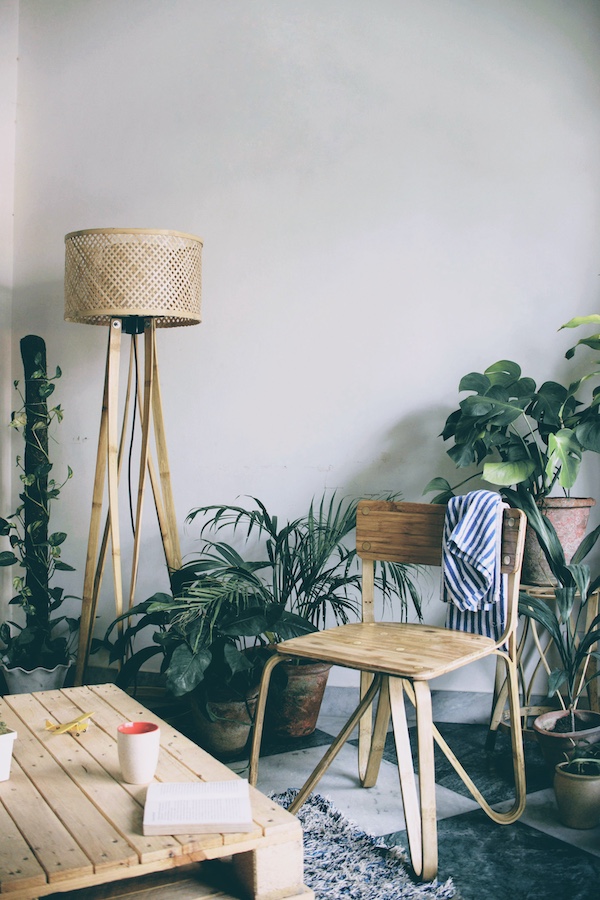
Bamboo has long been celebrated in Northeast India for its versatility and strength, forming an integral part of the region’s handicraft tradition. Techniques such as splitting, weaving, and bending are employed to transform this organic material into exquisite furniture, showcasing its lightweight nature and remarkable longevity. Mianzi, a socially conscious brand dedicated to home décor and furnishings, embodies this revolution in sustainability through its innovative designs. Their ‘Butterfly Chair’ eliminates traditional weaknesses associated with furniture joints, its triangular geometry enhancing the structural integrity and distributing pressure evenly. Furthermore, the chair is ready to assemble, featuring a user-friendly design that requires only a simple Allen Key Tool for assembly. The ‘Butterfly Chair’ is more than just a piece of furniture; it represents a shift in perception, redefining bamboo from “poor man’s timber” to a sustainable and stylish choice for the future.
Also read: The Shift In India’s Billion Dollar Handicraft Industry – From Export To Domestic Retail
6. Embracing The Natural Heritage Of Rattan & Cane With Urra Design
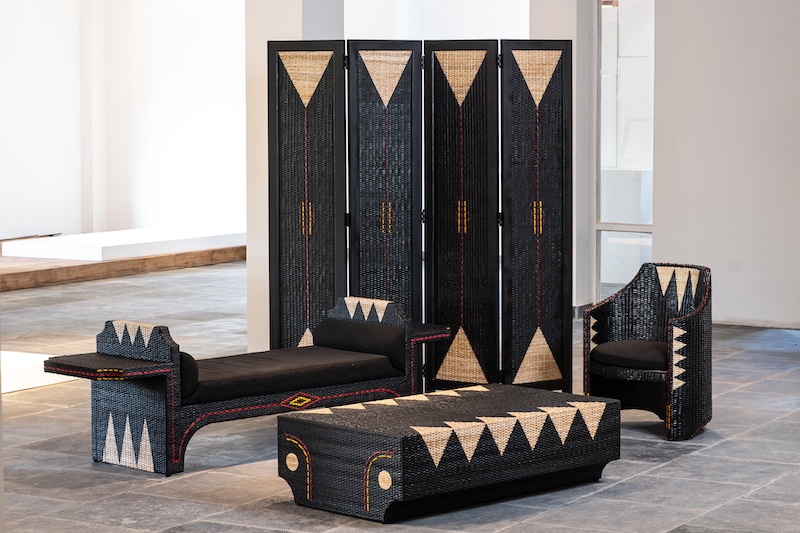
In Northeast India, the art of cane and rattan weaving holds a special place, deeply intertwined with the land’s cultural heritage. Artisans meticulously prepare the cane by soaking it to enhance its pliability, allowing for the creation of complex patterns and shapes. Rattan, a climbing palm, is often used as a binding material, adding strength and resilience to woven structures. The use of naturally sourced dyes, derived from local plants and minerals, enriches the colour palette of the finished products. Urra Design showcases exquisite craftsmanship through elaborately designed pieces from their ‘Angkha Collection’—the divider, chair, table, and diwan—all reflecting the vibrant hues found in the traditional jewellery worn by women in the region.
South — A Mosaic Of Clean Lines And Graceful Woodwork
7. Reimagining Chettinad Elegance With BeatRoot Co
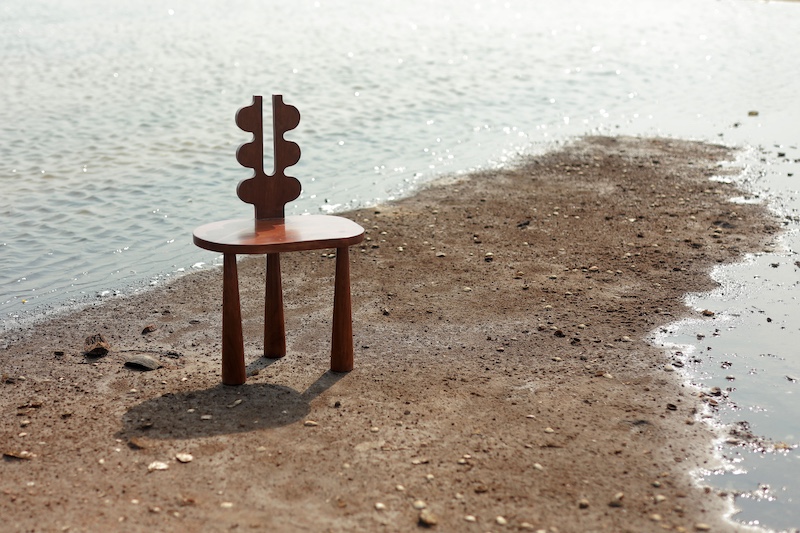
South India is renowned for its rich handicraft traditions, characterised by the use of local materials such as teak wood which makes it ideal for furniture production. One such exemplary piece that embodies this legacy is ‘That Chair’ by BeatRoot Co. This innovative design features a sinuous backrest and wide legs, merging comfort with a sculptural quality. The natural grain and rich hues of the wood enhance the chair’s visual appeal, while the expert joinery techniques employed by the artisans ensure that each piece is not only gorgeous but also built to last. The design exemplifies a keen understanding of balance, with the bold lines echoing the architectural heritage of the Chettinad region. The careful consideration of texture and form exemplifies BeatRoot Co’s mission to create furniture that resonates with both the eye and the spirit, fostering a deeper connection between the piece and its owner.
Also read: Heritage-inspired Designs And Iconic Heirloom Pieces At Temple Town’s Newest Store In Kochi
8. Resurrecting The Fluidity Of Lathe-Turning With Madras Makers
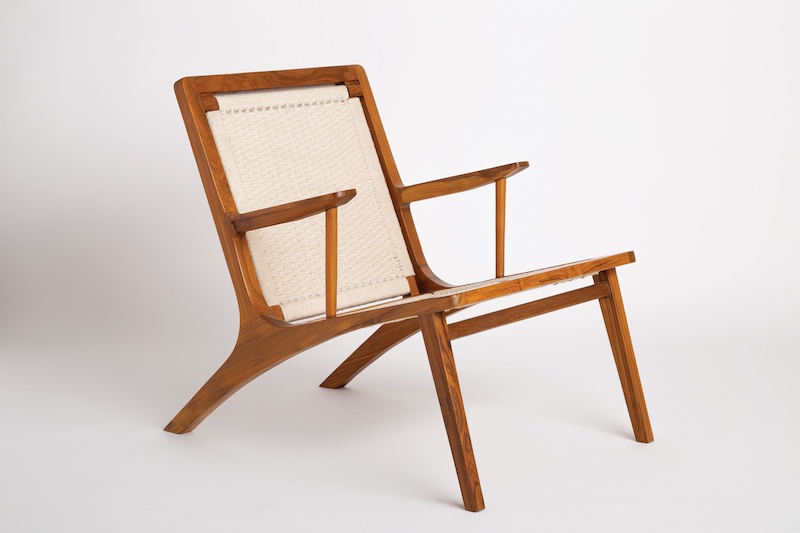
South India’s proclivity for woodworking is inherently tied to the use of Indigenous hardwoods like teak and their distinct lathe-turning technique that traces back to the Western Chalukya dynasty, reigning over the Deccan plateau from the 10th to the 12th century. This painstaking technique involved shaping cylindrical stone pillars with a rotating lathe, allowing artisans to carve detailed, symmetrical designs with precision. Drawing from this legacy, Madras Makers reinterprets tradition through their handcrafted ‘Wai Chair,’ where reclaimed teak is thoughtfully repurposed to form a minimalist frame. The chair’s curved silhouette is complemented by a lattice of delicately woven cords—either rattan or natural cotton—creating a seat that is as sturdy as it is visually light. Each piece undergoes a rigorous seven-stage hand-sanding and finishing process to achieve a glistening sheen that honours the material’s intrinsic beauty. Madras Makers’ work is more than just furniture—it’s a mellifluous blend of craftsmanship and contemporary design, ushering South India’s woodworking from the modern age.
Tags
- Metal Craftsmanship
- Artisan Furniture
- Brass Crafts
- Teak Wood Furniture
- Handcrafted Design
- Teak Wood
- Bamboo Furniture
- Sustainable Crafts
- Cane Weaving
- Craftsmanship
- Artisanal Furniture
- Modern Indian Design
- Lathe Turning
- Rattan Furniture
- Home Decor Inspiration
- Bamboo Design
- Sustainable Living
- Interior Design Ideas
- Concrete Furniture
- Luxury Furniture
- Bespoke Furniture
- Brass Tables
- Sustainable Materials
- Craft Revival
- Silver Cladding
- Sculptural Design
- Heritage Crafts
- Minimalist Furniture
- Indian Handicrafts
- Design In India
- Wood Working
- Traditional Crafts
- Artisan Made
























